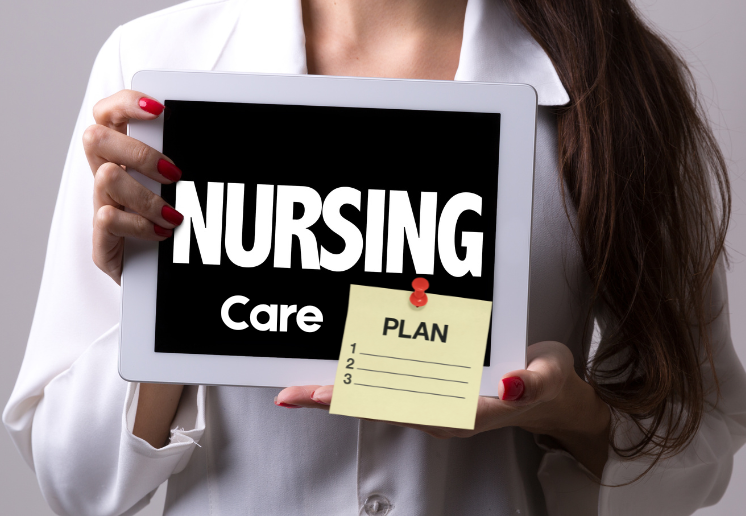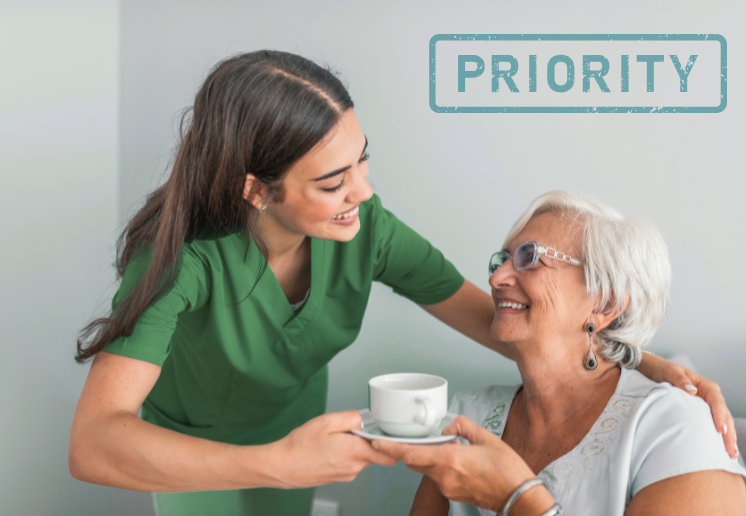Table of Contents
When stepping into the nursing profession, you have two primary ways to proceed–licensed practical nurse and registered nurse. Let’s focus on the former for now.
Licensed Practical Nurse (LPN) provide essential care under the supervision of RNs and doctors. If you’re drawn to hands-on patient work and want a stable, rewarding career, becoming an LPN could be the right path.
This guide breaks down how to become a licensed practical nurse, from education to licensing and more. Plus, you’ll know how to be the best LPN by getting our NCLEX prep course. Let’s start.
Who is a Licensed Practical Nurse?
A Licensed Practical Nurse provides basic medical care under the supervision of registered nurses and doctors. LPNs play a crucial role in patient support. They monitor vitals, administer medications, assist with hygiene, and update medical records.
They work in hospitals, nursing homes, clinics, and home healthcare settings, offering a blend of technical skill and compassionate care.
LPN programs typically take 12–18 months to complete, followed by passing the NCLEX-PN exam for licensure. There’s strong job growth and opportunities to advance into RN roles. So becoming an LPN is a practical entry point into nursing.
Key Responsibilities of a Licensed Practical Nurse
Licensed Practical Nurses are essential frontline caregivers, blending clinical expertise with compassionate patient interaction. Their core responsibilities include:
- Patient Care: Monitoring vital signs, assisting with hygiene, dressing wounds, and helping with mobility.
- Medication Administration: Safely dispensing oral, topical, and injected medications as prescribed.
- Basic Medical Procedures: Conducting lab tests, inserting catheters, and collecting samples.
- Documentation: Maintaining accurate patient records and reporting changes to RNs or doctors.
- Patient Advocacy: Providing emotional support and educating patients on care plans.
LPNs bridge the gap between patients and advanced medical staff, making them invaluable in healthcare settings.
Difference Between LPN & RPN
| Factor | Licensed Practical Nurse | Registered Practical Nurse |
|---|---|---|
| Terminology | Used in the United States | Used in Canada (particularly, Ontario) |
| Education | 12-18 months diploma/certificate | 2-Year college diploma (in Ontario) |
| Licensing Exam | NCLEX-PN (US) | CPNRE or REx-PN (Ontario) |
| Scope of Practice | Basic patient care (vitals, meds, wound care) under RN/MD supervision | Similar to LPN but may have slightly broader responsibilities in Canada (e.g., more autonomy in community settings) |
| Supervision | Works under RNs or physicians | May work more independently in some Canadian provinces |
| Career Advancement | Can bridge to RN via LPN-to-RN programs | Can bridge to RN via RPN-to-RN programs |
Skilled Required by a Licensed Practical Nurse
To succeed as an LPN, you need a balanced mix of clinical expertise, interpersonal abilities, and technical proficiency. That’s what will ensure a safe patient care and career growth.
Patient Care & Monitoring
LPNs are the eyes and ears of healthcare, tracking vital signs, detecting subtle changes in condition, and preventing complications. Their vigilant monitoring ensures early intervention, keeping patients stable and safe under their watch.
- Vital signs assessment (BP, pulse, temperature, respiration)
- Wound care & dressing changes (sterile technique)
- Catheter insertion & care
- Assisting with ADLs (bathing, feeding, mobility)
- Infection control (proper PPE use, isolation protocols)
Medication & Treatment Administration
From pain relievers to IV antibiotics, LPNs calculate dosages with precision, verify orders, and administer treatments safely. Their attention to detail prevents errors and ensures therapeutic effectiveness.
- Oral, topical, and injectable medication delivery
- IV therapy (if certified)
- Accurate dosage calculations (math competency)
- Recognizing adverse drug reactions
Basic Medical Procedures
Whether drawing blood, changing dressings, or inserting catheters, LPNs perform clinical tasks with steady hands and sterile technique. Their technical competence keeps patients comfortable and procedures complication-free.
- Specimen collection (urine, blood, stool)
- ECG monitoring (in some settings)
- Oxygen therapy assistance
- Post-mortem care
Communication With the Patients
LPNs translate medical jargon into understandable guidance, easing anxieties through clear explanations. Active listening helps them uncover unspoken concerns, fostering trust between patient and provider.
- Active listening (understanding patient concerns)
- Clear reporting to RNs and doctors (SBAR technique)
- Patient/family education (explaining treatments in simple terms)
- Cultural sensitivity (working with diverse populations)
Emotional Intelligence
Reading unspoken distress in a patient’s expression or de-escalating family tensions requires empathy and composure. LPNs balance clinical detachment with compassionate connection, making care feel personal.
- Compassion & patience (especially with elderly/chronic patients)
- Stress management (handling high-pressure situations)
- Professional boundaries (maintaining a caring yet objective approach)
Teamwork & Collaboration
LPNs synchronize with RNs, CNAs, and doctors, ensuring seamless care transitions. Their ability to relay critical updates and adapt to team dynamics keeps healthcare units running smoothly.
- Delegating tasks to CNAs
- Conflict resolution (navigating staff/patient disagreements)
- Adapting to different work environments (hospital vs. home care)
Technical & Administrative Skills
Beyond bedside care, sometimes, LPNs document treatments in EHRs, manage supply inventories, and comply with protocols. Their organizational skills ensure accuracy in both clinical and clerical tasks.
- Electronic Health Records (EHR) documentation
- Basic medical terminology
- Infection control protocols
- Safety compliance (fall prevention, restraint guidelines)
Problem-solving & Critical Thinking
When a patient’s condition suddenly changes, LPNs assess risks, prioritize actions, and implement solutions swiftly. Their quick judgment bridges the gap until higher-level support arrives.
- Recognizing urgent vs. non-urgent symptoms
- Prioritizing tasks in fast-paced settings
- Troubleshooting equipment issues (e.g., malfunctioning BP cuff)
It’ll help if you keep a skills checklist and track your progress—many employers use competency assessments for promotions. So how to become the best LPN?
How to Become a Licensed Practical Nurse? (in the US)
Becoming an LPN is a great way to launch a stable, rewarding healthcare career in 1-2 years. Here’s a clear roadmap to entering this in-demand profession:
Meet the Basic Education Requirements
LPN programs require proof of secondary education, so students have basic literacy, math, and critical thinking skills necessary for nursing coursework.
How to fulfill it?
- Earn a standard high school diploma.
- Complete a state-approved GED program.
- Some programs accept HiSET or TASC equivalents.
If you struggled in high school, consider refreshing key subjects like biology and algebra before applying. Many community colleges offer remedial courses as well as pre-nursing science courses to prep you for the further process.
Complete an Approved LPN Education Program
Enroll in a practical nursing program that is approved by your state’s Board of Nursing. These programs are typically offered at community colleges, vocational schools, technical schools, and sometimes hospitals.
Program Duration
Most LPN programs take about 12 to 18 months to complete if attending full-time. Some accelerated programs might be completed in as little as seven months.
Curriculum
The curriculum combines classroom instruction with supervised clinical experience. Coursework typically includes:
- Anatomy and Physiology
- Pharmacology (the study of medications)
- Basic Nursing Skills (e.g., taking vital signs, administering medications, wound care)
- Medical-Surgical Nursing
- Pediatric Nursing
- Geriatric Nursing (care of older adults)
- Patient Safety and Infection Control
A significant portion of your program will involve hands-on clinical practice in various healthcare settings. Like, hospitals, nursing homes, and clinics. It’ll be crucial for developing your nursing skills.
Pass the NCLEX-PN Exam
After completing your LPN program, you must apply for licensure with your state’s Board of Nursing. Once they determine your eligibility, you will receive an ATT (Authorization to Test). Then, you can register for the NCLEX-PN.
Exam Format
The NCLEX-PN is a computerized adaptive test (CAT), meaning the difficulty of the questions adapts based on your previous answers. The exam primarily consists of multiple-choice questions but can also include other formats like fill-in-the-blank and multiple-response questions.
Exam Content
The exam tests your knowledge and ability to apply nursing principles in various areas, including:
- Safe and Effective Care Environment (Coordinated Care, Safety and Infection Control)
- Health Promotion and Maintenance
- Psychosocial Integrity
- Physiological Integrity (Basic Care and Comfort, Pharmacological and Parenteral Therapies, Reduction of Risk Potential, Physiological Adaptation)
You must pass the NCLEX-PN to become licensed as an LPN. If you don’t pass on your first attempt, you can retake the exam. That is, after a waiting period (typically 45 days), as per the policies of the National Council of State Boards of Nursing (NCSBN).
Apply for State Licensure
Once you pass the NCLEX-PN, you need to submit a formal application for licensure to your state’s Board of Nursing. Each state has its own specific requirements for licensure, which may include:
- Proof of graduation from an approved LPN program
- Passing NCLEX-PN scores
- Criminal background check and fingerprinting
- Application fees
Some states may have additional requirements. Something like, coursework on specific topics or proof of English proficiency for internationally educated nurses.
Renew the License
LPN licenses need to be renewed periodically. That usually means every two years. Renewal often requires completing a certain number of continuing education hours, meaning Continuing Education Units (CEUs).
So, trying to become the best licensed practical nurse in the United States? Then get FBNPC’s NCLEX prep program. It’s a fast, affordable pathway into nursing with strong job growth.
Becoming an LPN/RPN in Canada
There are two licensure pathways of becoming an LPN or RPN in Canada, depending on your province:
- RExPN (Regulatory Exam-Practical Nurse): Ontario and British Columbia.
- CPNRE (Canadian Practical Nurse Registration Exam): Alberta, Saskatchewan, Manitoba, and others.
Step 1: Meet the Basic Entry Requirements
Before enrolling in a practical nursing program, you must ensure you meet the following criteria:
- High school diploma or equivalent (Grade 12 with credits in English, math, biology, and chemistry).
- Criminal record check (including a vulnerable sector screening).
- Immunizations & health clearance (TB test, hepatitis B, etc.).
- English/French proficiency (if applicable, via IELTS, CELBAN, or TEF).
Some colleges may require entrance exams or interviews.
Step 2: Complete a Required Practical Nursing Program
LPN/RPN programs in Canada are 2-year diploma programs offered at:
- Saskatchewan Polytechnic (SK)
- NorQuest College (AB)
- George Brown College or Centennial College (ON)
Curriculum for the program would likely include the fundamentals of nursing and health assessment. You’ll also study pharmacology, gerontology, pediatrics, and mental health. Plus, you will need to go through clinical placements across different settings (acute, long-term, community).
Make sure the program is approved by your province’s nursing regulator (e.g., CLPNBC in BC, CRPNM in Manitoba, CNO in Ontario).
Step 3: Pass the Required Exam
After graduation, you must pass RExPN or CPNRE, depending on your province or state nursing regulatory board.
| Exam | Where It’s Used | Format | Notes |
|---|---|---|---|
| RExPN | Ontario, BC | Computer Adaptive Test (CAT) | Like NCLEX—real-time question adaptation |
| CPNRE | AB, SK, MB, NS, PEI, NL, NB, YT, NT, NU | Computer-Based (NOT paper-based) | 165 questions; competency-based |
RExPN is created by the NCSBN, uses advanced CAT technology, and is designed to evaluate entry-level practical nurses. CPNRE is administered by Assessment Strategies Inc. (ASI), aligned to the national competencies for practical nurses. The latter is fully computer-based as of recent updates.
With FBNPC, you can get preparation courses for RExPN as well as for CPNRE. Our aim is to help you become the best licensed practical nurse possible.
Step 4: Apply for Licensure
Once you pass the exam, register with your provincial nursing college, such as:
Requirements for Licensure:
- Proof of graduation from an approved program
- Passing exam scores
- Criminal record check
- Application fee (varies by province)
There may be some other jurisdiction-based requirements.
Step 5: Maintain Active Registration
To keep your license, you must:
- Renew annually or biennially (fees apply)
- Complete continuing education (CE) requirements (varies by province)
- Stay updated on nursing standards (e.g., infection control, new regulations)
Becoming an LPN/RPN in Canada is a rewarding career path with strong job prospects. But make sure you do full research beforehand and consult with the experts at FBNPC.
How to Grow As a Licensed Practical Nurse?
Becoming an LPN is just the beginning—your nursing career offers multiple pathways for professional and financial growth. Further down the career, you can either specialize, move into leadership, or transition to an RN role. Here’s how you can strategize.
Earn Specialty Certifications
Many LPNs choose to specialize in specific areas of care. That can lead to increased responsibility, job satisfaction, and sometimes higher pay. Common certifications for LPNs include:
- IV Therapy Certification: Allows LPNs to administer intravenous fluids and medications (state regulations vary).
- Wound Care Certification: Demonstrates expertise in assessing and treating various types_of wounds.
- Gerontology Certification: Focuses on the specialized care of elderly patients.
- Pharmacology Certification: Enhances knowledge of medications and their administration.
- Long-Term Care Certification: Specializes in providing care in nursing homes and other long-term care facilities.
- Developmental Disabilities Certification: Focuses on caring for individuals with intellectual and developmental disabilities.
- Urology or Nephrology LPN Certification: For those interested in specializing in urinary or kidney-related patient care.
Some organizations like National Association of Licensed Practical Nurses (NALPN) that ensure certification programs.
Gain Advanced Degree or Specialization
One of the most common and significant growth paths for LPNs is to become a Registered Nurse (RN). Many “bridge” programs are designed specifically for LPNs. So they can use their existing knowledge and experience to earn an advanced degree more quickly. Like, Associate Degree in Nursing (ADN) or a Bachelor of Science in Nursing (BSN).
- LPN to ADN: Typically takes 1-2 years and prepares you for RN licensure.
- LPN to BSN: Typically takes 2-4 years and provides a broader education. It often opens doors to more advanced roles, leadership positions, and higher salaries.
RNs generally have a wider scope of practice and more autonomy. Plus, they have greater opportunities for specialization and advancement, and higher earning potential.
Other than these, you may even expand your clinical experience in various environments. Like hospitals, long-term care, home health, clinics, physician offices, schools, etc. It can broaden your skill set and understanding of the healthcare system.
FAQs on Becoming a Licensed Practical Nurse
Q.1 How long does it take to become an LPN?
Most LPN programs take 12 to 18 months to complete if attended full-time. Accelerated programs may shorten this timeframe, while part-time options can extend it to 24 months. This includes classroom instruction, lab training, and clinical rotations.
Q.2 Is CPNRE paper-based?
No. The CPNRE is fully computer-based and is offered at test centers across Canada and nowadays students can also take this test from home with online proctoring.
Q.3 What is the NCLEX-PN exam?
The National Council Licensure Examination for Practical Nurses (NCLEX-PN) is the standardized test required to become a licensed LPN. It covers safe nursing practice, patient care, and medical knowledge. Passing this exam is mandatory in all U.S. states.
Q.4 Can I work as an LPN while studying to become an RN?
Yes. Many LPNs work part-time or per diem while enrolled in LPN-to-RN bridge programs. Some employers even offer tuition reimbursement for nurses advancing their education.
Q.5 What’s the difference between an LPN and a CNA?
LPNs have more medical responsibilities (e.g., administering medications, wound care) and require formal education. Certified Nursing Assistants (CNAs), however, focus on basic patient care (bathing, feeding) and complete shorter training (4–12 weeks). LPNs also earn significantly higher salaries.
Q.6 Can international nurses become LPNs in the U.S.?
Yes, but they must have their credentials evaluated (via CGFNS or similar agencies). They should also meet English proficiency requirements and pass the NCLEX-PN. Some may also need to complete additional training if their education doesn’t align with U.S. standards.
Q.7 Can LPNs administer vaccines?
In most states, yes—if they complete additional training. During public health crises (like COVID-19), scope-of-practice laws may temporarily expand to include immunizations.
Q.8 Can LPNs/RPNs administer injections or IV meds?
Yes—with proper certification and as per provincial/state regulations, LPNs/RPNs can administer oral, IM, and SC medications. If certified, they may also administer some IV therapies.
Final Summary
Becoming a Licensed Practical Nurse is one of the most efficient ways to launch a stable, rewarding career in healthcare. You will need focused training, dedication to patient care, and a commitment to lifelong learning. That’ll help you complete your education in as little as 12 months and enter a field with consistent demand.
The journey requires effort. You’ll need to meet prerequisites, excel in your program, pass the NCLEX-PN, and secure licensure. But the payoff is worth it. You’ll gain hands-on experience that can serve as a foundation for future advancement.
So, want to become the best licensed practical nurse? Need help passing NCLEX-PN, RExPN, or CPNRE? Join FBNPC’s prep courses—designed for both Canadian and American exams. Contact us today!



